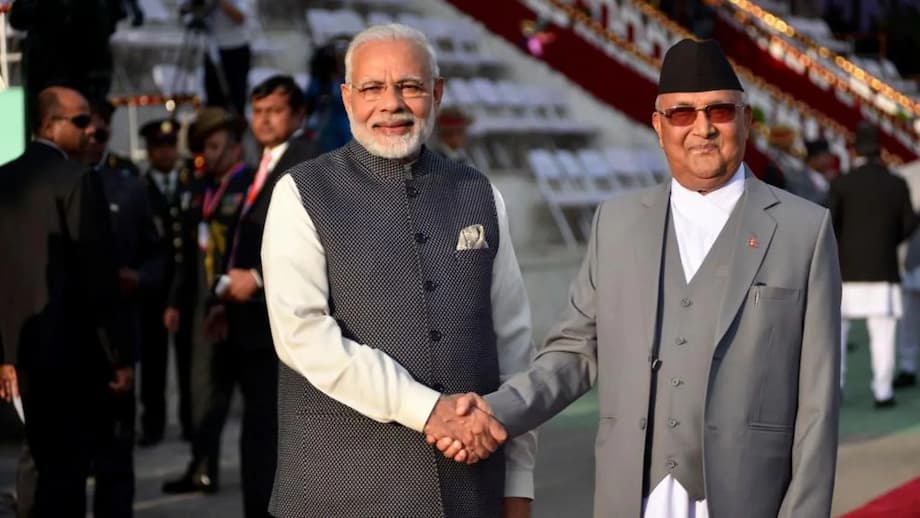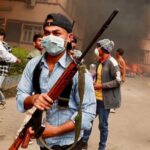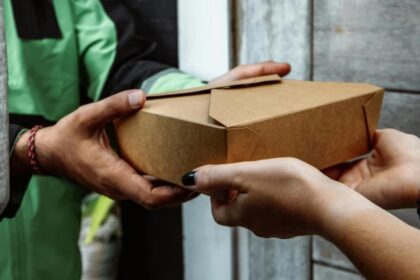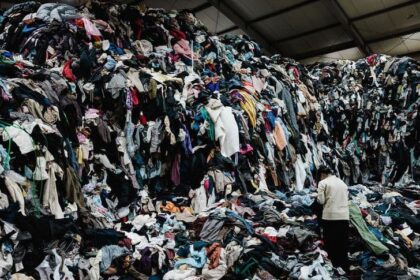Unrest in Kathmandu reverberates across the Indian border
Nepal has been thrust into its gravest turmoil in years after days of street battles toppled the government in Kathmandu. More than 20 people were killed during protests that erupted after a sudden ban on social media platforms, a move that demonstrators saw as a blunt tool to silence dissent. Prime Minister KP Sharma Oli stepped down as crowds stormed the parliament precincts and torched the homes of senior politicians. A curfew remains in force and the army has been called out to support police efforts to secure key sites. The scenes recall the political shocks that rattled Sri Lanka in 2022 and Bangladesh in 2024, with one important difference. Nepal’s crisis sits on India’s long and open frontier.
- Unrest in Kathmandu reverberates across the Indian border
- What triggered the crisis and who is driving it
- How New Delhi is responding
- Why Nepal matters to India
- Trade lifelines at risk
- The China factor and a crowded field of external actors
- Lessons from past flashpoints between India and Nepal
- Possible political scenarios in Kathmandu
- Key Points
The stakes for New Delhi are unusually high. India and Nepal share a 1,750 km border across five Indian states, with deep people to people links, extensive trade and religious ties. The relationship is woven into daily life on both sides. Nepalis can work in India without restriction under a 1950 treaty. The Indian Army includes about 32,000 Gurkha soldiers from Nepal. Millions of Nepali citizens live or work in India, with estimates of the diaspora around 3.5 million. Kathmandu relies heavily on imports from India, from fuel and food to medicines and machinery, and thousands of Indian pilgrims visit holy sites in Nepal each year.
New Delhi moved quickly as the crisis escalated. Prime Minister Narendra Modi expressed anguish over the loss of young lives and appealed for calm, then chaired an emergency security meeting to assess the situation. Indian officials also urged citizens in Nepal to exercise caution and reconsider travel. Analysts say Delhi had not expected events to spin so fast, especially with Oli scheduled for a visit to India within days. Instability at this particular doorstep touches India’s security, economy and regional standing at once.
What triggered the crisis and who is driving it
The immediate spark was the government’s decision to block more than 20 social media apps, including Facebook, WhatsApp, YouTube and X. Authorities argued that platforms were not complying with new rules. Young Nepalis poured into the streets in anger, accusing the government of muzzling free expression. Clashes intensified after security forces used live fire in some locations. Although the ban was later lifted and Oli resigned, demonstrations persisted, fuelled by long standing grievances over corruption, nepotism, job scarcity and heavy outmigration.
Local reporting points to a combustible political backdrop. Oli had just returned from China and was due to visit India, a sequence that revived debate about Nepal’s foreign policy tilt. Commentators also noted friction around projects linked to China’s Belt and Road Initiative, alongside growing American economic engagement through the Millennium Challenge Corporation. Many experts caution against overreading geopolitics in the current unrest. The protest wave, they say, is first and foremost a domestic reckoning led by young citizens frustrated with a revolving door of governments and a lack of opportunity.
A flashpoint that tapped deeper frustrations
Demonstrators have aired a mix of demands. Some call for dissolution of parliament and fresh elections within a year, direct election of the prime minister, term limits, and a shorter parliamentary term. The rise of Kathmandu’s outspoken mayor Balendra Balen Shah, an independent who built a profile by railing against graft, reflects a generational shift in mood. There is also chatter about non partisan figures for a caretaker role, including former chief justice Sushila Karki, though such ideas remain speculative and contested inside Nepal’s current constitutional framework.
Two young Nepali voices captured the mood among many protesters in interviews carried by Indian media. Achyut Paudel, a Nepali student of international relations in India, said the movement springs from daily frustrations rather than elite intrigue.
“The system may have changed with the 2015 constitution, but the situation for youths has remained the same. Challenges like unemployment, brain drain, corruption, and poor education continue to plague Nepal. Oli’s resignation is only a superficial shift; the deeper crisis persists.”
Another student, Pranjali Swar, described the protests as a fight over dignity and voice in a digital age.
“As a Gen Z myself, I see this movement as a fight against corruption and suppression of free expression. The government’s attempt to silence voices by banning social media only made us more determined. The goal is a new government that is clean and free of nepotism.”
How New Delhi is responding
Indian officials have adopted caution as their guiding principle. The Ministry of External Affairs urged Indian nationals in Nepal to stay indoors and reconsider travel plans. Security agencies are scanning for spillover risks along the open border, from crowd movements to possible disruptions at key crossings. Policy circles in Delhi are also discussing how to protect essential trade while avoiding the appearance of interference, a delicate balance in a country where anti India sentiment can flare if New Delhi is seen to take sides.
Amit Kumar of The Takshashila Institution, a public policy think tank in India, said the government wants to avoid old pitfalls while still preparing to help if called upon.
“The Indian Government has expressed concern over the violence and appealed for peace, but avoided taking sides. Given past experiences, New Delhi doesn’t want to be seen as interfering in Nepal’s internal political turmoil.”
“Any direct involvement could be politically risky. If India intervenes, anti India sentiment could rise very quickly. The government’s restraint is therefore the right approach. If requested, India should extend support to restore stability, but only then.”
Why Nepal matters to India
The depth of India Nepal ties is unusual in South Asia. The open border permits free movement for work, study, trade and family visits. An estimated 3.5 million Nepalis live or work in India, while Indian border districts are tied into Nepali markets and services. Religious tourism binds societies as much as commerce. The friendship also has a hard security edge. Nepal sits athwart routes that fall from the Himalayas into the Indo Gangetic plains, the heartland that anchors India’s economy and population. India worries that prolonged disorder could produce sudden population flows or give space to hostile networks to operate near the frontier.
A geography that shapes security
Strategists in Delhi also keep an eye on China’s posture opposite Nepal. China’s Western Theater Command, which manages China’s border with India, lies across the high mountains. Any deepening of Chinese security ties with Nepal, or an unexpected shift in transit infrastructure, would attract close Indian scrutiny. India does not want the crisis to become a channel for uninvited third party roles inside Nepali politics or security. That risk is one reason senior Indian officials have kept lines open with all sides while avoiding strong public positioning.
Trade lifelines at risk
Trade is the most immediate concern for both countries. Bilateral commerce is in the range of 8 to 9 billion dollars a year. In the last fiscal year, India exported goods worth roughly 7.3 billion dollars to Nepal and imported around 1.2 billion dollars. Fuel, vehicles, machinery, medicines, fertilizers and food grains flow north. Nepal’s sales to India include refined edible oils, carpets, cardamom, polyester yarn and growing volumes of electricity. Most of this moves by road. Any extended unrest or strike can jam vital crossings and slow customs operations, with quick knock on effects for supply chains and prices.
Several transport arteries carry the bulk of traffic. The Raxaul Birgunj route is the busiest. Sunauli Bhairahawa, Jogbani Biratnagar and Nepalgunj Rupaidiha are also crucial. Rail and air links exist but handle only a small share. Kolkata Port is the main gateway to the world for Nepali trade. If Nepal’s internal distribution remains blocked, a promise of port access does not guarantee deliveries to shops and hospitals. Exporters in India worry about perishable goods and pharmaceutical consignments that cannot sit for long in depots. Freight companies in Nepal have warned of mounting losses if curfews and road closures continue.
Hydropower is a rare bright spot
One area offers forward momentum even in a difficult year. Nepal has started to sell more surplus hydropower to India during the monsoon months under multi year purchase agreements. The revenue helps offset Nepal’s import bill, and India benefits from clean energy during peak demand. The scale is still modest compared to petroleum imports that Nepal buys from India, but power trade is growing and could expand further with new transmission lines and regulatory clarity. That requires a stable political environment, steady financing and functioning cross border logistics.
The China factor and a crowded field of external actors
Nepal’s position between India and China gives every political jolt a regional angle. Kathmandu has signed on to China’s Belt and Road Initiative, although some planned projects have moved slowly. The United States has invested through the Millennium Challenge Corporation and looks to expand economic ties. The timing of the unrest, coming after Oli’s return from China and ahead of a planned trip to India, invited speculation about outside influence. Researchers and diplomats who track Nepal point out that the protests are rooted in domestic frustrations, even as outside powers watch for advantage. Foreign actors will test the boundaries. The core drivers, however, sit in Nepal’s own political economy and governance.
Balancing friends without triggering backlash
India and China both want influence in Kathmandu. Indian leaders are wary of any public posture that might spark a nationalist response in Nepal. Chinese officials have expressed hope for stability and could explore a larger mediating role later, as they have tried in other parts of the region. Delhi’s challenge is to stay engaged with every major force in Nepalese politics while avoiding even the appearance of trying to pick winners. Regional cooperation platforms such as SAARC remain largely dormant, which pushes New Delhi to work bilaterally, often quietly, on trade, energy and border management.
Lessons from past flashpoints between India and Nepal
Memories of the 2015 2016 border blockade are still raw in Nepal. After a new constitution was adopted in 2015, protests in the Madhes plains coincided with a choke point at crossings that left Nepal starved of fuel, medicines and other essentials for weeks. Nepal’s leaders accused India of backing the blockade. India said dissatisfaction inside Nepal, especially in Madhesi communities, was the root cause and denied restricting supplies. Whatever the mechanics, the humanitarian cost and the political scar were real. Many Nepali citizens still cite that episode to argue for more diversified trade and transit, even as geography keeps India at the center of Nepal’s economy.
Border maps and political symbolism
Territorial claims also inflame public sentiment. In 2019 and 2020, new political maps and statements revived disputes over areas such as Kalapani, Lipulekh and Limpiyadhura. Even when such disagreements are managed through dialogue, they shape perceptions. Small moves in trade, infrastructure and security agreements can take on large symbolic weight. Indian officials acknowledge that sensitive subjects require careful handling, especially when tempers are high on the streets of Kathmandu.
Possible political scenarios in Kathmandu
With Oli gone, Nepal faces a complex period. The constitution sets out a path for forming a government from within the current parliament, possibly through a caretaker arrangement if parties cannot assemble a durable coalition quickly. Protest leaders who speak for large groups of young Nepalis are pressing for deeper changes, including a reset of electoral rules. President Ram Chandra Poudel has urged dialogue while the army secures public buildings under a strict curfew. Speculation has swirled around non party figures who might steady the ship for a short period. The ascent of a civic figure like Mayor Balen Shah would reflect the public mood but would also raise new questions about how to navigate party structures and the constitution. Monarchist voices are louder than in recent years, yet there is little sign that the current unrest is a restoration movement.
What India could do without taking sides
Indian officials and analysts outline a few practical steps that keep channels open but avoid overreach. First, keep consular and border coordination tight to ensure medical supplies, fuel and food can move even during curfews. Second, use existing contact points with all major Nepali parties to support a peaceful, constitutional process without prescribing outcomes. Third, invest in Nepali youth in ways that answer genuine demand, for example more scholarships, short skills courses tied to jobs in India, and fellowships that build long term networks. Fourth, expand power trade and connectivity projects that can deliver quick wins, such as additional transmission capacity and faster work at integrated check posts. Finally, be ready with humanitarian support if Nepal requests it, consistent with the principle that help comes on Kathmandu’s terms.
Key Points
- More than 20 people were killed in protests sparked by a social media ban, leading to Prime Minister KP Sharma Oli’s resignation and a nationwide curfew.
- India reacted with calls for peace, an emergency security review and a travel advisory, while avoiding any public move that could look like interference.
- India and Nepal share an open 1,750 km border, a 3.5 million strong Nepali diaspora in India, and extensive military, religious and family ties.
- Bilateral trade is roughly 8.5 billion dollars a year, led by Indian exports of fuel, food and machinery, with key crossings at Raxaul Birgunj, Sunauli Bhairahawa, Jogbani Biratnagar and Nepalgunj Rupaidiha.
- Transport snarls in Nepal can quickly disrupt supplies of perishable goods and medicines, despite Kolkata Port remaining open for Nepal bound cargo.
- Nepal’s growing electricity exports to India provide a revenue stream, but volumes are still small compared to petroleum imports.
- China’s Belt and Road plans and US economic programs add a geopolitical layer, yet experts say the protests are largely powered by domestic frustrations.
- Memories of the 2015 2016 border blockade and recent map disputes make Delhi especially careful about optics and messaging.
- Possible outcomes include a caretaker government formed from parliament, early elections, or an interim arrangement, with the army enforcing curfew while leaders negotiate.
- Analysts recommend India stay engaged with all sides, safeguard essential trade, support youth focused exchanges, and be ready to assist if Nepal asks.












